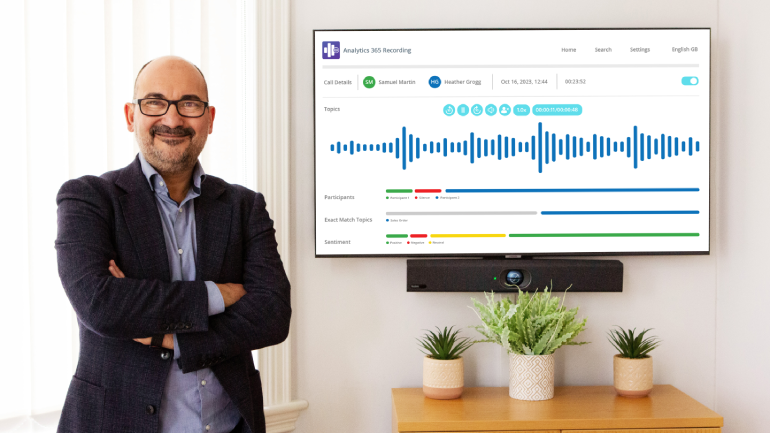When we talk about the future of corporate communication networks, most experts point to VoIP technology as the future. However, many companies still opt for older platforms that, although offering fewer features, can still be quite reliable. The most famous of them goes by the name of SS7.
But what are the fundamental differences between VoIP and SS7? In this article, we will examine what each of these technologies does, their advantages and disadvantages, and in what situations they present themselves as the best options for the communication structure of companies around the world.
SS7: An old technology, but it may still be necessary
SS7 is the abbreviation for Signalling System 7: a digital network dedicated and used for initializing and controlling voice calls. Each signaling point on the SS7 network is uniquely identified by numeric point code. These are loaded in signaling messages exchanged between signaling points in order to identify the source and destination of each message. The cue point uses a routing table to select the appropriate path for each message.
Today, SS7 works with three types of signaling points: switching service points (SSPs), signal transfer points (STPs), and service control points (SCPs).
SSPs are originally switches that create, terminate or queue calls. SCPs and STPs are usually arranged in pairs to ensure that the service on the network remains operational, even if an isolation failure event occurs.
Who uses SS7 networks?
An SS7 network still pays off if companies have limited branches, or if they do not have enough scale to justify the more intensive use of VoIP solutions, or if their telephony physical infrastructure is already amortized and does not require more investments.However, because of cost issues, which you’ll see below, this SS7 usage argument is being overturned.
In addition, several telephone carriers around the world still use the SS7 network to make interconnections between each other and to carry out the final termination.
Advantages of SS7
Voice traffic on SS7 networks is loaded into voice circuits and sent on bidirectional signaling links at the rate of 56 kb/s or 64 kb/s. Due to the separation of signaling and voice networks, the first can occur during a call without affecting the voice traffic. This is called out-of-band signaling, which allows a number of advantages over in-band signaling such as:
- A faster call initialization;
- The support for services that require signaling during the call and a better control over fraudulent use of the network;
- An operation that works well in more distant places, where Internet infrastructure malfunctions or, simply, does not exist;
- A more efficient use of voice channels: "As calls made on SS7 networks use a dedicated channel – unlike VoIP, whose channels need to be shared with other services – the user will have greater stability when making and receiving calls,” said Peter Kodic, president of Jive in Brasil, a company that develops cloud-based business telephone systems.
Disadvantages of SS7 solutions
- The SS7 network is only used for voice calls: in the past, some companies still tried to use SS7 networks for video streaming (video conferencing), but the experience was unsuccessful because of the gigantic data traffic that overloaded the network.
- Costs for companies: SS7 networks require companies to invest in physical infrastructure. They need to spend on PBX devices, maintenance, appliances, plus the need to have enough space to install all this hardware. In addition, companies using SS7 networks must pay telephone carriers for all purchased channels, even when they are not being used. And they cannot be reused by other centers," said Jorge Carrasquilla, solutions architect at Colt Technology Services.
- SS7 is disappearing: today, SS7 technology is being quickly replaced by VoIP, which offers a lower cost of use, is easier to manage, brings mobility – since it can also be used in smartphones and tablets – and is multitasking, as it allows voice calls, video, and internet access.
In conclusion, in regions like Europe and the US, SS7 has already been extinguished. Today, all companies in these two regions already use Internet protocols to perform their communications.
In EU countries, all telephone carriers are using Internet protocols to intercommunicate. As a result, roaming fees no longer exist, said Carrasquilla.
VoIP: The future of communications reaches a new level
Voice over Internet Protocol, or simply VOIP, is the name of the technology that allows the transmission of voice (and video) using Internet Protocols – better known as IPs.
Even though companies have been using this standard for just a few years, the VOIP has been around for more than 20 years, created in the early 1990s to be more precise.
In order to function, VoIP captures the voice and transforms it into data packets, which are sent through TCP / IP protocols and then transformed again into voice. The application part issues a dial tone and the gateways compare the digits accumulated with the programmed numbers; in case of a match, it fetches the dialed IP address from the destination gateway. The session application runs the session protocol over the IP, to establish a transmission and reception channel for each direction through the IP network. If the recipient answers the call, an RTP flow is established over UDP between the source and destination gateways, making the conversation possible.
The transmission can be done from one computer to another, from a computer to a conventional phone (or an IP Phone) and also from a PC to a smartphone. However, to make use of this technology, you need to install an application that is compatible with it, such as Skype, WhatsApp or apps designed for corporate environments.
Who uses VoIP networks?
Today, most companies around the world have abandoned traditional telephony systems and replaced them with VoIP solutions. In the US, Europe, Oceania and in more developed countries in Asia, it is almost impossible to find companies that still work with traditional PBX systems because they were all replaced by PBX based in IPs.
Advantages of VoIP
- Lower cost in infrastructure and tariffs: today, VoIP-based telephony systems allow you to eliminate much of the physical infrastructure within companies, and users only need their Internet connection. In addition, voice (and video) calls using VoIP are free if they are made from one computer to another and if both are connected to Wi-Fi networks. The same goes for smartphones that are connected to this type of network.
- VoIP is a convergent technology: the channels used by VoIP technology are multitasking, which means that while you are making a voice call, you can also use this band to access websites, watch videos or send emails.
- Cloud telephony: many experts consider this technology as the next generation of VoIP in the communications world for mainly two reasons. The first is that cloud telephony solutions eliminate all of the physical infrastructure used by SS7 systems and its management, considered quite complex. The second reason is that cloud telephony solutions are considered simpler to manage. A company network administrator can do all the management of numbers through a web application using a browser. Besides, with cloud telephony, the user can answer calls both on his desk and on his smartphone, since his mobile phone becomes an extension of the number.
- The mobile market: more and more, operators around the world are abandoning their traditional mobile networks as revenue generators. Now their bets are directed towards the consumption of data via IP. Thus, in the medium-term, VoIP calls will wipe out traditional voice calls also in mobile telephony, since the user will stop using the operator’s minute packets and will start using the packet data that he chooses to subscribe with the telephone carrier." Also, with the development of more efficient compression algorithms, VoIP calls will consume a smaller amount of data, which significantly reduces the costs for users," said Fernando Flauto, IT GRC Partner of consultancy Crowe Horwath.
Disadvantages of VoIP
- Internet infrastructure: many countries still do not have a reliable Internet infrastructure (the client-to- provider link). With this, VoIP solutions can present instability in performance, such as making voice and video calls. Moreover, for calls made on mobile devices, VoIP only works from 4G networks, not present in all countries.
- VoIP does not have dedicated channels: because it is a convergent technology, VoIP solutions use their channels for various tasks, such as voice, video, and data to access websites, for example. As a result, these channels become overloaded, reducing the quality of the transmission.
But that’s already being solved,” said Peter Kodic. “The new routers that are being used in businesses have a configuration called QoS (Quality of Service). This feature allows the network administrator to set up a channel to use just the voice. That is, it simulates an environment similar to SS7, using a similar parameterization and improving the quality of the connections.
- Simultaneous calls: since each connection made via VoIP takes up a certain amount of bandwidth, some companies’ infrastructure may not support this demand. “If a large company has a thousand extensions, it needs to have available bandwidth for a thousand connections at the same time, and that can generate high costs,” said Fernando Flauto. “With this, some companies hesitate to adopt VoIP on a large scale.”
Even though SS7 networks still have some utility, especially in regions that lack Internet infrastructure, their extinction is inevitable. The SS7 platform will be totally replaced by VoIP in a few years, after all, VoIP is a cheaper, easier-to-manage, multi-tasking and, of course, more efficient technology.
So, if you still refuse to introduce VoIP in your company, you better review your communication concepts. The Voice Over Internet Protocol is here to stay. And for a long, long time.







